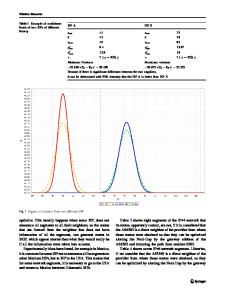New Routes to Nanocomposite Materials
- PDF / 363,636 Bytes
- 5 Pages / 414.72 x 648 pts Page_size
- 31 Downloads / 553 Views
INTRODUCTION Aerogels are open pore, low density solids (typically 5% solid) that can have compositions that include a variety of metal oxides [1], polymers and carbon [2]. Aerogels are made using solgel processing followed by supercritical extraction of the entrapped solvent. Aerogels are the best existing thermal insulating materials. In order to further enhance the insulating performance of silica aerogel we investigated introducing additional components to aerogel to block transmission of infrared radiation [3]. This radiative heat transfer is responsible for up to half the thermal conductivity of evacuated aerogel at ambient temperatures. Addition of carbon, iron oxides, or organic components to absorb the infrared substantially reduces infrared transmission in aerogel. This approach may increase aerogel's thermal resistance by up to a factor of two at ambient temperatures and much greater factors at elevated temperatures. Various methods to introduce second phases into the aerogel were explored, including adding fine particles in sol stage, soaking gels in alcohol solutions containing dissolved species of metals, and post treatment of the aerogel. Post treatment is the subject of this paper. Aerogels typically have very high specific surface areas. This characteristic combined with their open porosity and composition causes them to catalyze gas-phase reactions. We have developed a method to make new composite materials by introducing a gas into aerogel and using its high surface area and catalytic properties to enhance thermal decomposition of the gas to form a new solid phase in the aerogel network[4]. The material produced in this way is unique in its structure and properties. Thermal decomposition of the gas within the aerogel takes place at significantly lower temperatures than it would in the free gas phase or on other solid surfaces. The decomposition products of the gas deposit as nano-phase material in the interior or on the surface of the aerogel to form a new composite. A variety of materials can be deposited by choice of the infiltrated gas. By varying the composition of the aerogel and gas a large number of composite materials can be fabricated. Aerogel composites produced by this method may exhibit photoluminescence (silicon in silica aerogel) ferromagnetic, paramagnetic, or super paramagnetic behavior (iron in silica aerogel). SILICA AEROGEL-CARBON COMPOSITES Aerogel composites may be formed by the thermal decomposition of hydrocarbon gases infiltrated into the open pore structure of the aerogel. All the aerogels used for these studies were prepared by the carbon dioxide substitution process [5]. Deposition of guest material into the aerogels may be accomplished in a variety of ways. A simple method is to place aerogel samples 451 Mat. Res. Soc. Symp. Proc. Vol. 346. 01994 Materials Research Society
in a porcelain boat that is loaded into a quartz walled tube furnace that forms the reaction chamber. The temperature of the furnace is increased at a rate of 5 to 200 C per minute. An inert gas su
Data Loading...











